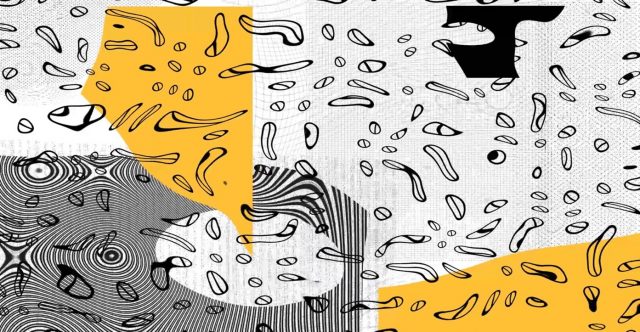
Despite decades of medical research for what remains a substantial public health problem, there are no medications approved by the U.S. Food and Drug Administration for the treatment of cocaine use disorder. Standard behavioral treatments, meanwhile, are beset by high failure rates. A line of pharmacotherapy research that holds promise is modulation of glutamate neurotransmission. The N-methyl-D-aspartate receptor (NMDAR) is the predominant glutamate receptor involved in learned behavior, and NMDAR modulators have been shown to disrupt the reinforcing effects of cocaine in animals, although comparable modulators, such as memantine, have yet to show efficacy in humans.
The dissociative anesthetic ketamine may represent an exception. Ketamine has been widely demonstrated to have robust anti-depressant properties when administered at subanesthetic doses, and its psychiatric mechanisms are hypothesized to extend beyond NMDAR modulation to include downstream effects on other neurotransmitter systems and on prefrontal synaptogenesis.
These mechanisms may also be relevant to treatment of cocaine use disorder; a single subanesthetic infusion of ketamine has been shown to exhibit substantial effects in cocaine-dependent research volunteers, including heightening motivation to quit cocaine use, reducing craving, and decreasing cocaine use in a laboratory setting.
Craving, low motivation, and high behavioral reactivity are recognized to undermine efforts at modifying drug-related behavior and to have an impact on fruitful engagement with behavioral treatment. A clinically feasible way that ketamine might address cocaine use disorder, therefore, is to create a reprieve from these deficits so as to better allow dependent individuals to access the benefits of behavioral interventions. The behavioral framework may in turn serve to leverage the typically transient benefits of ketamine into sustained clinical improvements.
Mindfulness-based relapse prevention (MBRP), a manualized treatment that has demonstrated modest efficacy for substance use disorders, may be especially well suited as a behavioral counterpart to ketamine. In addition to training individuals in cognitive-behavioral strategies, MBRP incorporates practices to cultivate mindfulness, an attitude of deliberate, present-centered awareness, coupled with a suspension of behavioral reactivity and of cognitive associations, judgments, and distortions. Interestingly, mindfulness practices are thought to provide benefit via neural mechanisms similar to those attributed to subanesthetic ketamine, including the regulation of mesolimbic functioning, the promotion of prefrontal neural plasticity and synaptogenesis, and sustained modulation of default-mode network hyperconnectivity.
In light of this overlap in neural and behavioral effects, it is possible that ketamine and MBRP may work together to promote sustained abstinence. The primary purpose of this randomized trial was to investigate whether a single subanesthetic ketamine infusion (0.5 mg/kg i.v. over 40 minutes) promotes abstinence relative to the active control midazolam in cocaine-dependent adults initiating MBRP. Other aims included assessing the effect of ketamine on craving and on time to relapse.
Discussion & Summary of Findings

This is, to our knowledge, the first clinical trial to investigate a subanesthetic dose of ketamine in cocaine-dependent individuals, as well as the first to investigate a single intravenous infusion in the context of behavioral treatment. We found that ketamine was well tolerated and promoted abstinence. We also found that, compared with midazolam, ketamine was associated with a lower likelihood of cocaine use, lower levels of cocaine craving, and longer time to relapse. A single ketamine infusion also led to a greater proportion of individuals remaining cocaine free at the 6-month telephone follow-up interview. These results suggest that ketamine, in combination with mindfulness-based behavioral modification, may be an effective pharmacotherapy for cocaine use disorder.
Previous studies with ketamine in cocaine-dependent individuals were laboratory-based trials investigating the subacute effects of ketamine (24-48 hours after infusion) on cocaine-related vulnerabilities in the absence of any behavioral treatment. Any improvements that were observed, such as reductions in use and craving, were typically transient, subsiding after several days. These preclinical data indicated that the benefits of ketamine are generally brief and would need to be extended in some manner to have a clinical impact.
One strategy for sustaining these effects is to embed ketamine infusions into an addiction-oriented behavioral framework. Such a combination might leverage the impact of ketamine into longer-lasting changes, especially in perspective, decision making, and relapse prevention skills. Early trials evaluating “ketamine psychedelic therapy” also employed an integrated approach, with intramuscular ketamine combined with existentially oriented psychotherapy to treat alcohol and opioid use disorders. We designated MBRP as the behavioral platform for ketamine because the two interventions share hypothesized neural mechanisms and have comparable effects on dependence-related vulnerabilities, such as reactivity and craving. Also, the psychoactive effects of ketamine, specifically its mystical-type phenomena, suggest some similarities with the meditative experience and might work to provide an experiential stepping-stone toward deepening mindfulness training.
While this trial was not designed to evaluate synergy between ketamine and MBRP, it served to evaluate whether ketamine provides additional benefit to individuals engaged in this behavioral treatment. The group receiving ketamine demonstrated higher rates of retention, consistent with the previous finding that ketamine enhances motivation to change drug use and supporting the hypothesis that it might serve to facilitate engagement with behavioral treatment. MBRP also appeared to be helpful in carrying forward the effects of ketamine beyond what has been observed in previous research, with participants maintaining abstinence and experiencing sustained craving reduction through several weeks. It is not possible, however, to conclude whether MBRP was necessary for sustaining the benefits of ketamine because our study did not include a treatment group that received medication without MBRP; it is conceivable, although unlikely based on previous work, that ketamine might have led to these results in the absence of any behavioral treatment. Similarly, another psychosocial framework might have been just as helpful a behavioral counterpart, as we did not compare different behavioral treatment and medication combinations. This trial suggests, in any case, that the effects of ketamine might be sustained when integrated into behavioral treatment; future research can examine this hypothesis more rigorously.
Future Implications
Further clarification of the therapeutic mechanisms of ketamine can assist in our understanding of how best to harness its clinical potential. A range of pathways have been hypothesized to account for the antidepressant efficacy of ketamine, from receptor-specific changes to neurotrophic, modulatory, and even psychological mechanisms. Some of these mechanisms are relevant to substance use disorders as well and suggest innovative strategies for enhancing or replacing ketamine. For example, preclinical research indicates that an infusion of brain-derived neurotrophic factor (BDNF), which has also been shown to be elaborated by ketamine, into the brains of rodents disrupts cocaine self-administration. This suggests that pharmacotherapy supplementing the BDNF-related effects of ketamine may serve to sustain efficacy.
A recent small study suggested that opioid-related mechanisms may be involved in the antidepressant effects of ketamine. Although these findings are preliminary, they call attention to why ketamine might be abused and to the importance of appropriately addressing this abuse liability in clinical settings. As in other clinical procedures involving substances of abuse liability (e.g., provision of postoperative opioids), there are various safeguards that work to minimize these risks, such as careful patient selection, preparation, monitoring, and postintervention support (9-12). These safeguards were incorporated into the present study as well as into the studies of ketamine in depressive and anxiety disorders; there has been no incidence of ketamine misuse in any of the research to date, suggesting that this risk can be effectively managed even when this agent is given to substance users. The behavioral and mindfulness-based framework may have also worked to guide participants to engage with the infusions in a therapeutic manner, cultivating a perspective that is not grasping of any particular sensation or experience, but that is accepting, deliberate, and nonreactive.
This trial has several limitations. The sample was relatively small, and there were minor discrepancies between treatment arms in demographic characteristics and preferred route of use. Future trials with larger samples and with randomization stratified by route of use should work to address this limitation. Furthermore, a larger sample may provide sufficient power to evaluate the impact of ketamine on the use of other substances that may be related to cocaine, such as tobacco and alcohol. Second, the study procedures were highly monitored, including an inpatient phase. Inpatient treatment of cocaine use disorders is uncommon, and the level of monitoring provided is unusual in standard practice. Third, the sample was relatively homogeneous, with a majority of participants African American and male, and with minimal psychiatric comorbidity. While the selection of patients with no comorbidities might hamper the extension of our findings to a more psychiatrically complicated population, it is likely that cocaine-dependent individuals with depression or anxiety would respond even more robustly to ketamine given evidence supporting its psychiatric efficacy. Future trials can examine the effect of ketamine on individuals with drug dependence and psychiatric comorbidity, as well as examine sex differences in the response to ketamine.
Another limitation pertains to the psychoactive effects of ketamine, which can be pronounced and easily identifiable in some cases. Although staff members involved in infusion procedures were not involved in subsequent data collection, and the primary outcome was unlikely to be affected by evaluator bias (e.g., drug use in the natural ecology), we did not test the integrity of the blind by ascertaining what medication participants or staff believed was administered during infusions. The minor deception we enforced to further protect the blind and minimize expectancy effects (i.e., informing participants they may get any of several medications) constitutes a limitation as well. This deception would not be enforced in clinical settings, and it raises questions about how abuse liability would be addressed when individuals with cocaine use disorder know they will be treated with ketamine.
Conclusion
Despite these limitations, these data represent a promising step in understanding the clinical role of ketamine in addiction treatment. Ketamine was effective at providing individuals already engaged in mindfulness-based behavioral modification with significantly greater odds of maintaining abstinence, substantial protection from relapse and craving, and lower likelihood of cocaine use. These sustained benefits, in some cases lasting several months, suggest the potential of ketamine for effecting long-term behavioral changes. Moreover, the integrated treatment framework was well tolerated, and MBRP appeared to enhance certain ketamine-related benefits, such as reductions in cocaine craving scores. Further research is needed to replicate these results in a larger sample, as well as to clarify mechanisms, examine more rigorously the hypothesis of synergy between ketamine and behavioral treatments, and evaluate emerging pharmacotherapies comparable to ketamine.


